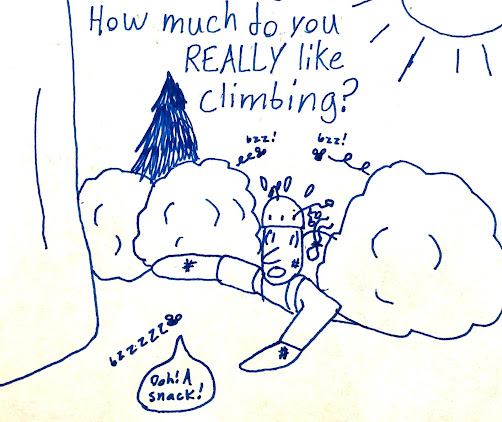Panem et Circenses: 5.14b or V12 X?
Last week, free soloing saw a new level of difficulty previously unheard of. Alfredo Webber, an Italian climber, climbed a 5.14b ropeless. To add to his feat, Webber is not a professional climber. He has spent his life being dedicated to climbing while working in a quarry, and he made this ascent at the age of 52! The route, Panem et Circenses, lays near Arco (a world-renown sport climbing area). For more details, check out Climbing Magazines article, which has a few more facts about this relatively unknown crusher.
First of all, I would like to emphasize that I find Alfredo's ascent to be insanely impressive. Despite the controversy that I am about to bring up, this climb required superhuman focus, fear management, and strength. But, while reading Climbing's article, they mentioned something that piqued my interest even more. Webber used two bouldering pads for protection. Does this mean that he soloed the route, or bouldered it?
The line between highball bouldering and free soloing often gets blurred. At what point does it get too high to be a problem? The article mentions two other solos of comparable difficulty, Dave Macleod's ropeless climb of Darwin Dixit and Alex Huber's solo of Kommunist, both 5.14a. But, if bouldering pads can be a part of the equation, what about ascents of Too Big To Flail, or other V10 and above highball boulders? Too Big To Flail is an infamous highball in Bishop, California, first done by Alex Honnold. Like Panem et Circenses, it is about 50 feet tall, with crimpy technical moves. Some have rated it 5.14 rather than V10. But, when it was first done, it wasn't considered a free solo, because bouldering pads were used to keep Honnold safe.
Free soloing is often associated with a sense of true mastery. Many premier soloists never touch anything that they aren't 100% sure they can climb or at least downclimb if need be. One example of this is Alex Honnold's solo of El Cap. I would argue that his chances of actually dying were quite low. Alex had practiced and perfected the whole route. But, when you add bouldering pads to the equation, you accept that there may not be that true mastery. That's why mortals, like me, climb with a rope on personally challenging objectives. I know that I am not a true master of the climb. A vast majority of climbers would say that you wouldn't want to climb Too Big To Flail or Panem et Circenses if you thought you might fall. But, by having pads, you're accepting that it's a possibility.
Webber spent two years preparing for this ultimate solo. It would be foolish to argue that there was no sense of true certainty and confidence when he climbed it sans rope. So, why would he bother with bouldering pads? Likely, he just wanted something there. Just in case. Many dangerous routes on Britain's infamous Grit Stone feature pointless pro, placed for similar reasons. It's "psychological pro". In fact, it's not unheard of to climb something with a rope and not even place a single piece. It's just the style that everyone expects...
But, if the style that everyone expects mattered so much to Alfredo, he would've just done it without the pads. Then he wouldn't have people like me pointing these things out. I think this is why he, Honnold, Macleod, and other accomplished bold climbers are so good. They do these things out of personal motivation. External pressure often leads to treading over the fine line between control and destruction.
Alfredo's climb can be whatever you want it to be. Webber used chalk and shoes as well, which you might consider aid. The pads may make it a highball in your mind. But, I think the only perspective that matters is Webber's. He seems proud of it... and without the motivations that he had, I think he may not have ended up like that. I hope we can all learn a bit from him...
Climbing can be important to you no matter how you do it. Whether you're proud to be toproping in the gym or soling butt naked without shoes.


Comments
Post a Comment